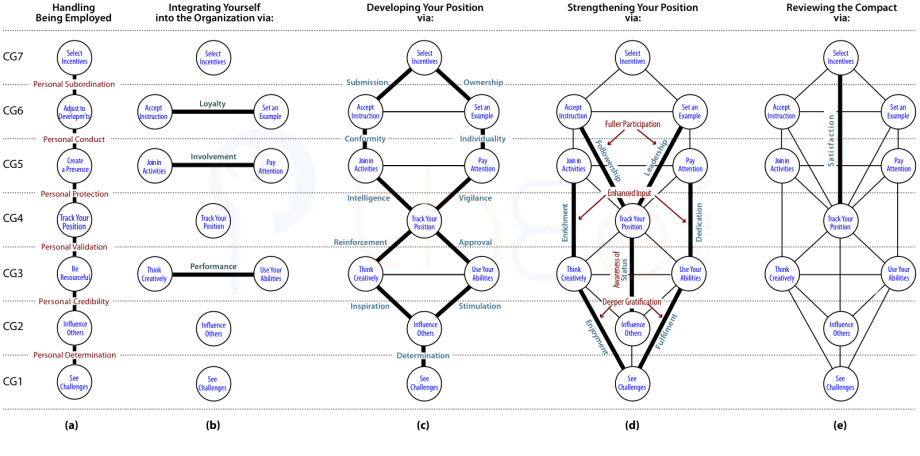The Employee's Framework
The diagrams here were created during a step-by step analysis. The following topics briefly review this work, mainly via diagrams. Then some parts of the Tree framework are extracted to see the story each tells.
Here is how we developed the in a large modern organization.
![]() Click to see. You need to close the navigation column to view without scrolling.
Click to see. You need to close the navigation column to view without scrolling.
Yourself and Your Work

Yourself v Your Work is the Internal Duality in the Tree for handling . This duality is as relevant to management as it is to you. It reflects factors of work life that should be obvious to all. Some of them may not receive as much attention as others. But that is the merit of a framework like this: you can picture it all and you can also focus on just a small part.
Upper Pole
The 5 Centres in the top 3 Levels in which you handle Yourself define Your Obligations to the Organization. You must select incentives and become part of the organization, not only submitting to and adopting the organization's ways, but also identifying with it, joining the staff community and being alert and attentive at all times.
In this section (pole), there are the personal sources of organizational strength in terms of how loyal and involved employees actually are.
Lower Pole
The 5 Centres in the lower 4 Levels in which you handle Your Work define Your Obligations to Yourself. You must take a creative approach to your work or it will become deadly. This starts with seeking challenges, and includes using all your abilities and imagination, as well as your skills in influencing others. For your own safety and well-being, it is essential that you track your position within the organization.
In this section (pole), the organization depends on the application of personal strength, which is primarily dependent on the quality of management, which itself depends on the application of personal strength. Tricky.
Now:
- consider all the Channels.
Originally posted: 17-Dec-2011
